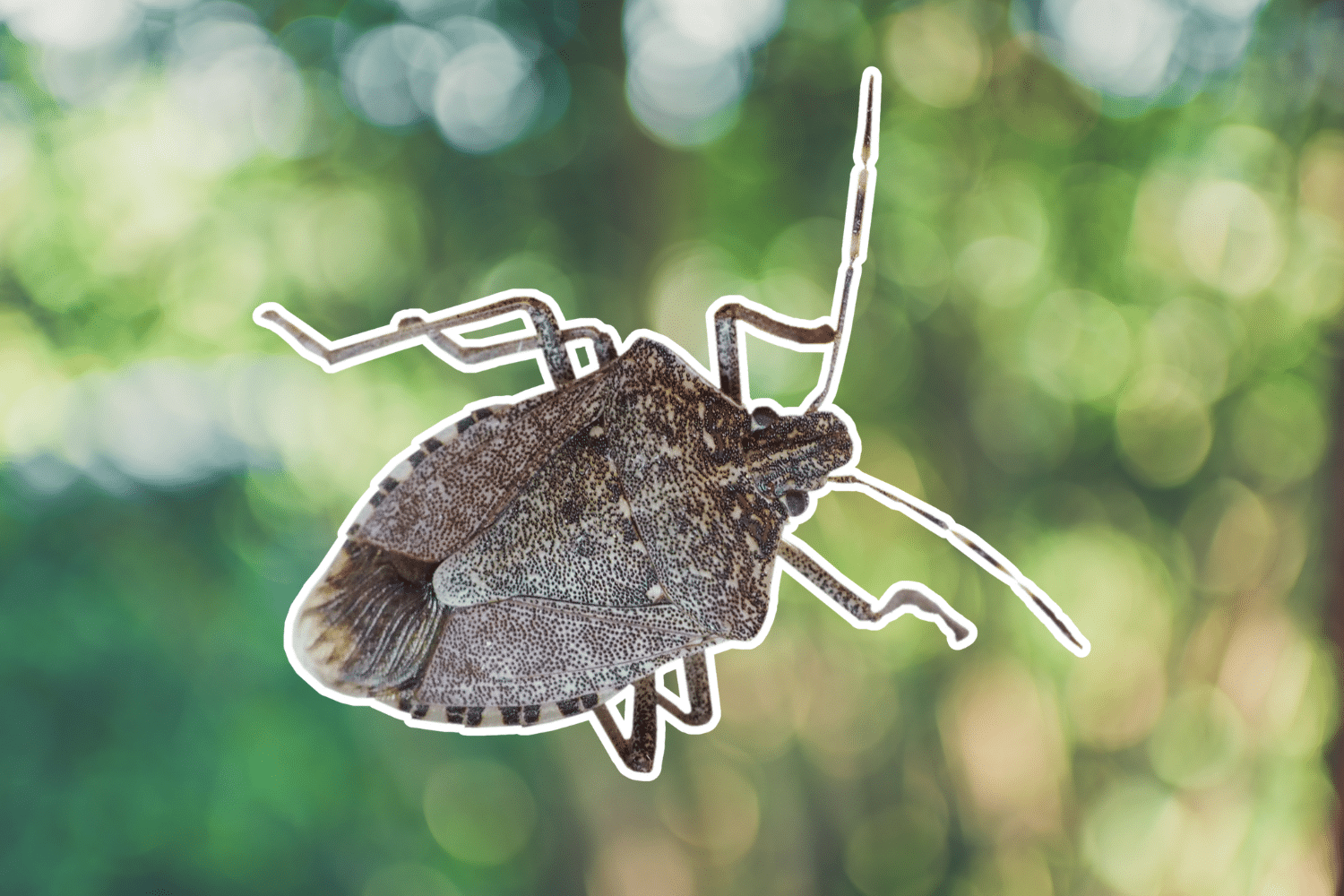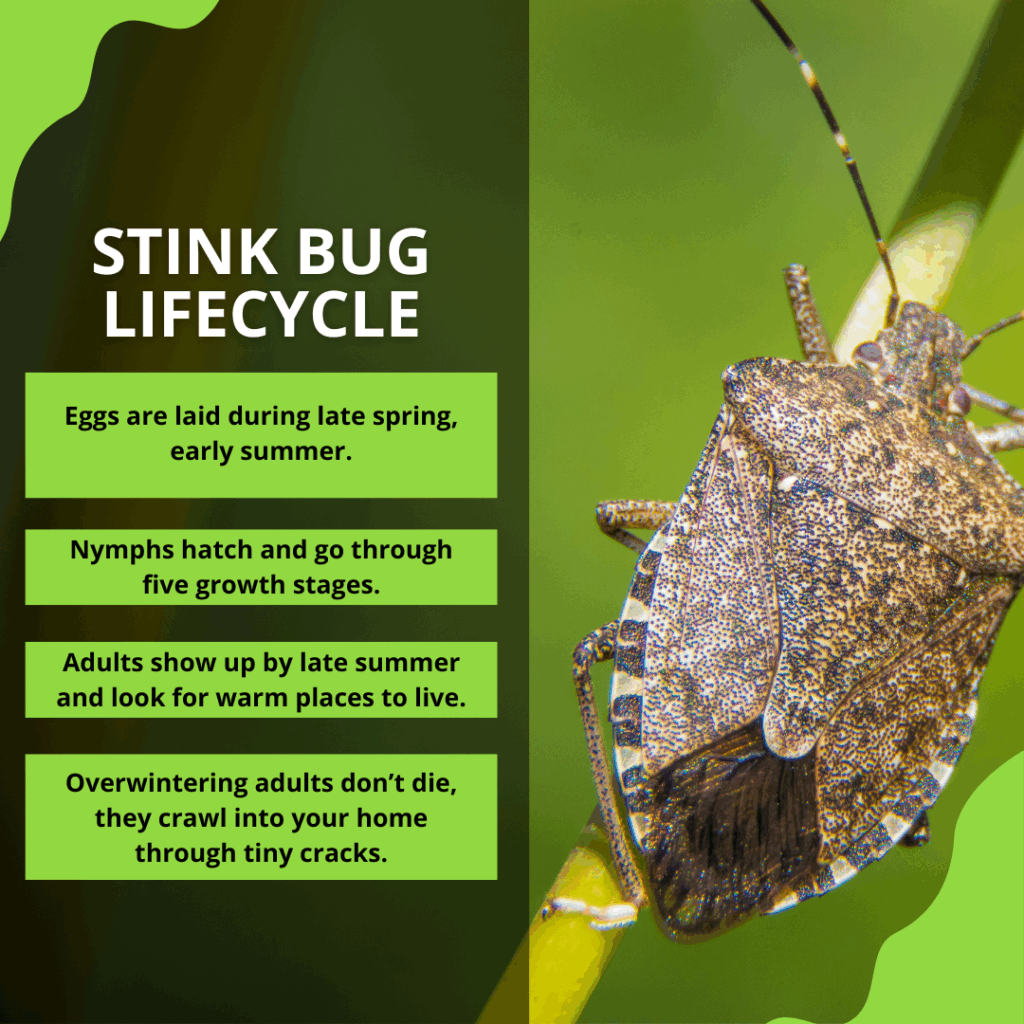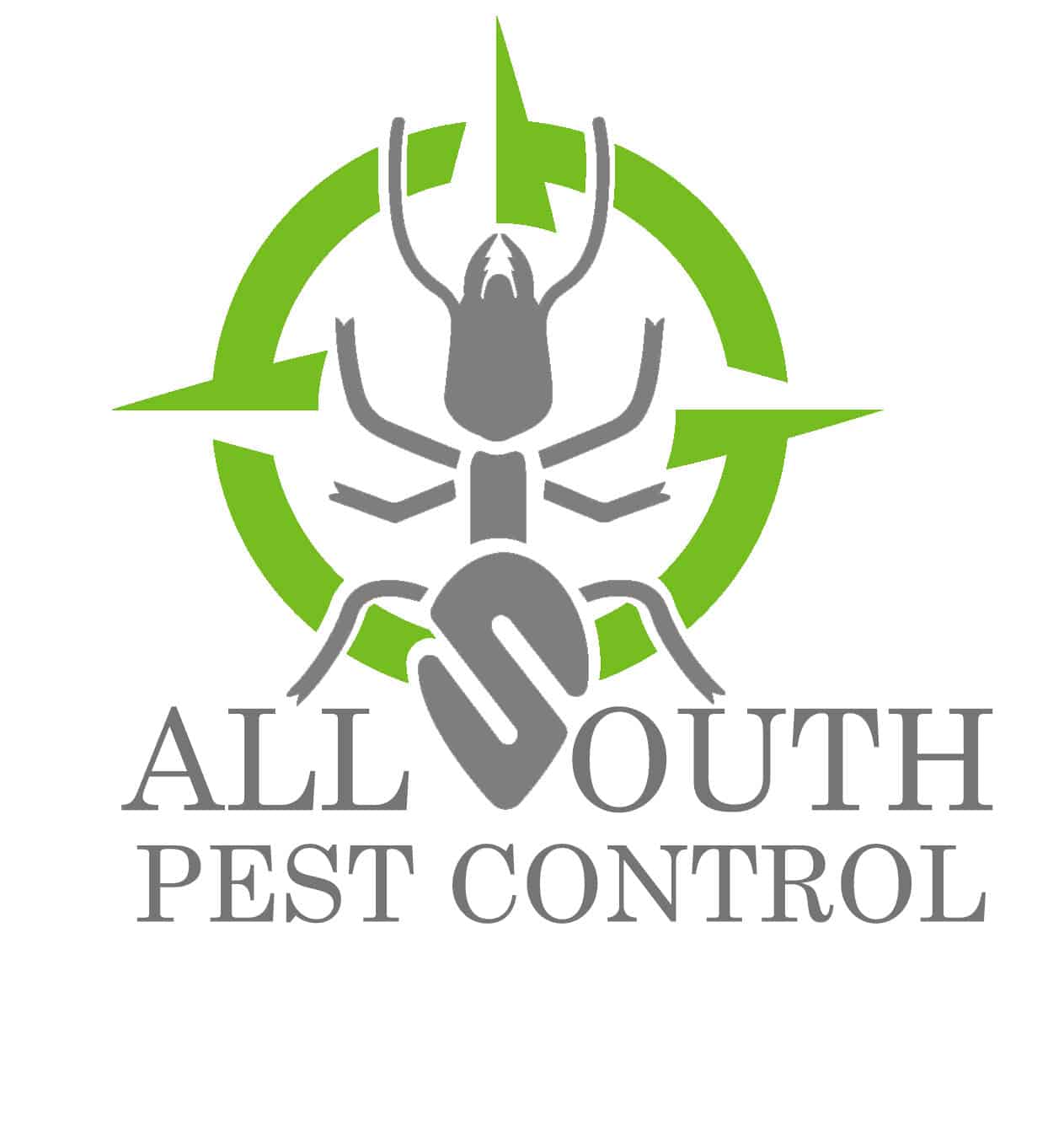
If you’ve ever found a strange bug crawling up your wall and noticed a bad smell after trying to get rid of it, chances are you’ve encountered a stink bug. While they might seem like just another harmless nuisance, the stink bug lifecycle plays a big role in how and why they end up in your home.
Understanding this lifecycle helps explain their behavior and gives homeowners a better chance of keeping them out before they become a bigger issue.
The Stink Bug Lifecycle
The stink bug lifecycle includes four main stages: egg, nymph, adult, and overwintering adult. Here’s how it works:
- Eggs are laid in clusters on the underside of leaves, usually in late spring or early summer. One female can lay up to 400 eggs in a single season.
- Nymphs hatch and go through five growth stages. These young bugs stay outdoors and feed on plants.
- Adults show up by late summer. As the weather cools, they begin looking for warm places to hide from winter.
- Overwintering adults don’t die in the cold. Instead, they crawl into your home through tiny cracks, crevices, vents, and even gaps under doors.
Each stage has its purpose, but it’s the adult stage that leads them into your house.

Why They Invade Homes During Fall
Stink bugs don’t come inside just by accident. Their lifecycle drives them to seek warmth and shelter, and your home has everything they need.
Places where stink bugs enter the home include:
- Small gaps around windows
- Doors, vents, or siding
- Chimneys and attics
- Bright porch lights
Another factor that attracts them is light. Bright porch or garage lights can pull stink bugs toward your home in the evening.
Once one bug finds a good place to hide, it releases a scent to attract others. That’s why infestations can grow quickly, and why sealing up your home early is so important.
According to the National Pest Management Association, nearly 30% of households in the Southeast report indoor sightings of stink bugs each year, especially in the cooler months. And when they start gathering indoors, the problem can quickly become more than just annoying.
The Damage They Leave Behind
At first glance, stink bugs don’t seem harmful. They don’t bite or sting, and they aren’t known to spread disease. But they can still cause plenty of frustration inside your home.
For starters, their smell is more than just unpleasant. It can linger in carpets, curtains, or furniture if the bugs are squashed. Their secretions can also leave behind stains on walls and ceilings. For people with allergies or asthma, the odor and particles they release may trigger reactions.
If they’ve found a way into your home, stink bugs may also get into indoor plants or even your pantry, especially if food is stored in less secure areas like basements or garages.
The longer they remain in hiding, the more likely they are to reappear when the weather warms back up in spring.
Waiting Can Cost You More Than You Think
It might be tempting to ignore a stink bug or two, especially if they’re not causing immediate problems. But small issues can quickly grow into larger infestations if the lifecycle continues unchecked.
A typical pest control visit to deal with stink bugs might cost anywhere from $100 to $400.
If your home needs additional work like sealing gaps or installing new weatherstripping or the stink bugs are nested in walls or attics, you might spend even more depending on the size of the home and the scope of the problem.
When you compare those prices to taking early action, it’s clear that prevention is the most cost-effective option.
How to Break the Cycle Before It Starts
There are several simple steps homeowners can take to disrupt the stink bug lifecycle and keep them from moving in.
The first and most important step is seal off any potential entry points. That includes using caulk around windows and doors, replacing worn-out weatherstripping, and fixing any torn window screens.
Add door sweeps and closing gaps around utility pipes can make a big difference. Outdoors, it helps to keep vegetation trimmed back from the home’s foundation.
Reduce bright lights near doors and using yellow bulbs can also keep stink bugs from being drawn toward the house in the first place.
If you find stink bugs inside, avoid squashing them. Instead, use a vacuum cleaner to gently remove them, and dispose of the vacuum bag immediately to avoid spreading the smell.
These simple steps can greatly reduce the risk of an infestation while keeping your home clean and comfortable.

When You Need Expert Help
If you’re seeing stink bugs regularly inside your home, especially in fall, it may be a sign that they’ve already found a way in and are starting to settle for the winter.
That’s where professional pest control makes a big difference.
At All South Pest Control, our team is trained to spot the most common entry points and provide targeted solutions.
We offer safe, effective treatments for both the inside and outside of your home, and our seasonal services are designed to break the stink bug lifecycle at just the right time. With options for one-time treatments or year-round protection, homeowners can choose the level of coverage that fits their needs.
Our approach is always focused on safety, effectiveness, and long-term prevention.
Stay Ahead of the Stink
The stink bug lifecycle plays a major role in how and why these pests end up inside your home. By understanding their habits and acting early in the season, you can stay one step ahead and avoid unpleasant surprises.
If you’re seeing signs of stink bugs or want help preparing your home before the colder months, a professional inspection can give you peace of mind.
The sooner you act, the easier it is to keep your home stink-free and protected year-round.
Need help identifying or treating a stink bug problem? Reach out to All South Pest Control professionals for advice, treatment options, and prevention you can count on.

Recent Comments